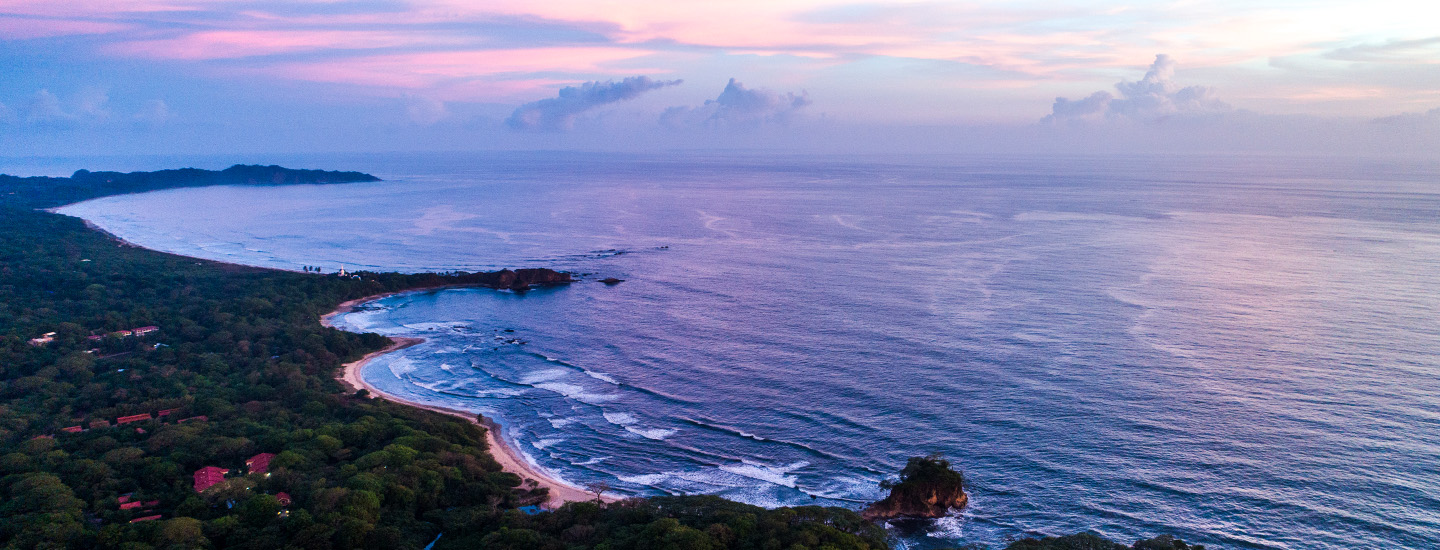
Weather in Costa Rica
Important aspects of the Costa Rican climate
In geography, the region between the Tropics of Cancer and Capricorn is called the tropics. Costa Rica is located in this region, which gives its ecological surroundings – its forests, waters, soils and climate – certain tropical characteristics. Its flora and fauna are adapted to these conditions, meaning that they are tropical as well.
This tropical climate is modified by various factors, including relief (mountains, plains and plateaus), its position on the Central American isthmus, the influence of the oceans (winds and sea breezes and the temperature of ocean currents) and the general atmospheric circulation. The interaction of all of these local geographic, atmospheric and oceanic factors are the main causes of the country’s regional climate.
The northwest-southeast orientation of the mountain range divides Costa Rica into two sides: the Pacific and the Caribbean. Each one of these has its own precipitation and temperature regimen with particular spatial and temporal distribution.
Pacific
The Pacific region is characterized by a well-defined dry and rainy season.The dry season lasts from December to March. April is a transition month. The driest and hottest month is March.The Pacific region begins in the northwest and ends in the southeast, meaning that the dividing line changes from north to south. The rainy season goes from May to October, with November being a month of transition.There is a relative decrease in the amount of rain during the months of July and August, which are termed veranillo, or “little summer”.These months are marked by an intensification of the trade winds.The rainiest month are September and October, mainly due to the influence of the cyclone systems, the monsoon winds from the equatorial Pacific Ocean, and the sea breezes. The rains mainly occur during the afternoon and early evening.
Caribbean
The climate regime of this side of the country does not have a well-defined dry season, since the rains remain steady between 100 and 200 mm in the driest months, which is a considerable amount.
Two relatively dry periods exist in the coastal zones. The first dry period is between February and March and the second between September and October.
The first dry period is in sync with the Pacific dry season, while the second period occurs during the rainiest months on the west coast.In addition, there are two rainy periods between the dry ones. The first one goes from November to January and is the strongest rainy period. The second one stretches from May to August and is characterized by a maximum in July that coincides with the “little summer” in the Pacific.The rainiest month is December, which is influenced by the effects of cold fronts coming from the Northern Hemisphere, which are present between November and May, though their greatest effect is felt between November and March. Rain falls mostly during the night and morning.
Main climatic regions in Costa Rica
The two precipitation regimes mentioned above, along with the height and orientation of the mountains and the prevailing winds and the influence of the oceans, allow the identification of seven main climatic regions in Costa Rica.
Location This region is located in the northwest of the country, including Guanacaste, the Puntarenas cantons of Esparza and Montes de Oro and those of Orotina and San Mateo in Alajuela. Ecology It is an extensive, coastal region with tropical forests, dry forests and wetlands. Climate The region is characterized by the continental mass made up of the Cordillera de Guanacaste and Cordillera de Tilarán mountain ranges (with an average altitude of 1,000 meters above sea level, or masl), the peninsulas of Nicoya and Santa Elena (300 masl) and the Tempisque depression (30 masl). The dry period lasts from December to March, with 4% of annual precipitation falling in these months. April is a transition month, with the rains setting in from May to August (50% of annual precipitation). June is the first peak month of rain, while the Pacific veranillo comes in during July and August with the intensification of the trade winds. The second rainy period lasts from September to November, giving way to the transition into the dry season.
